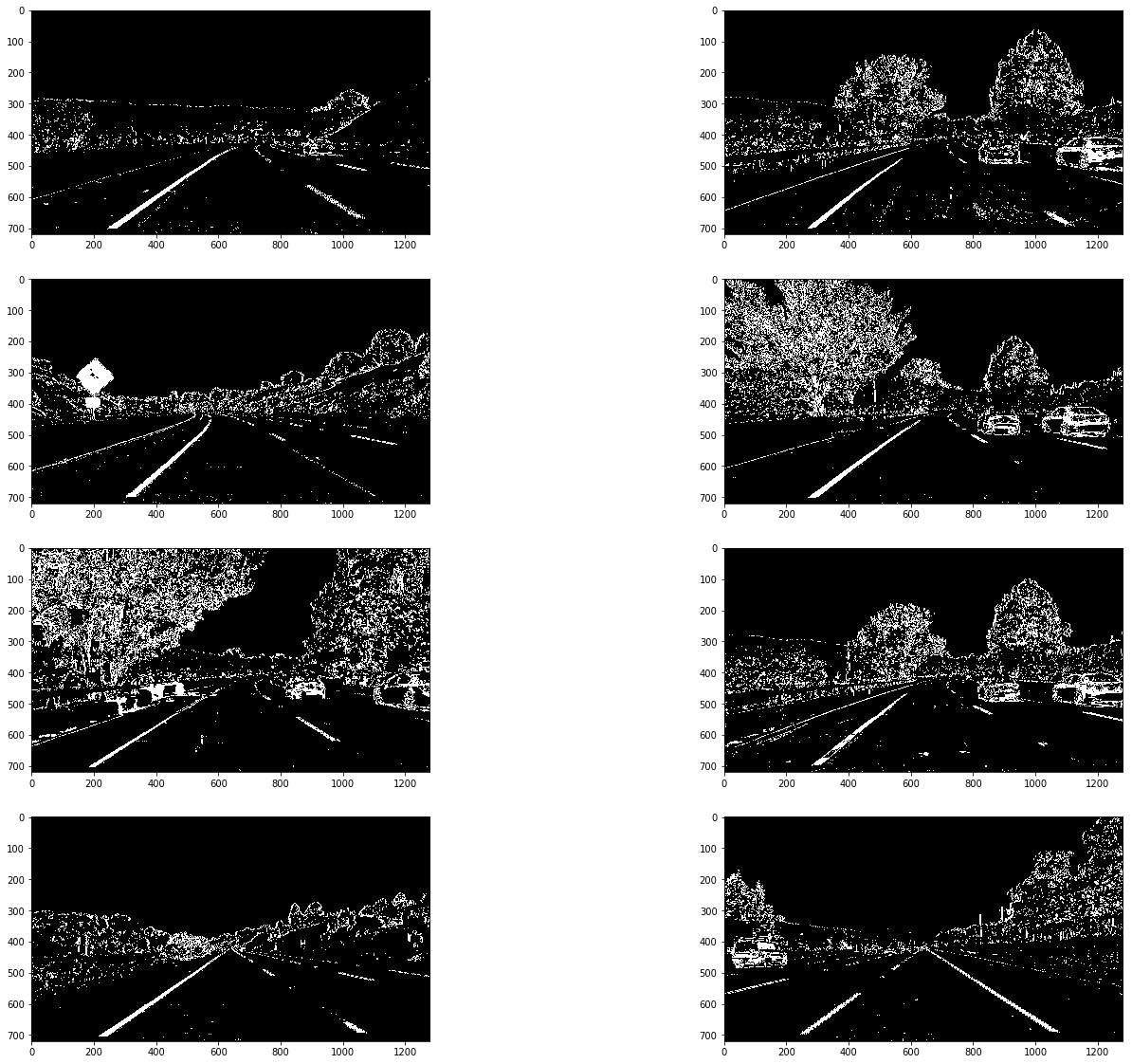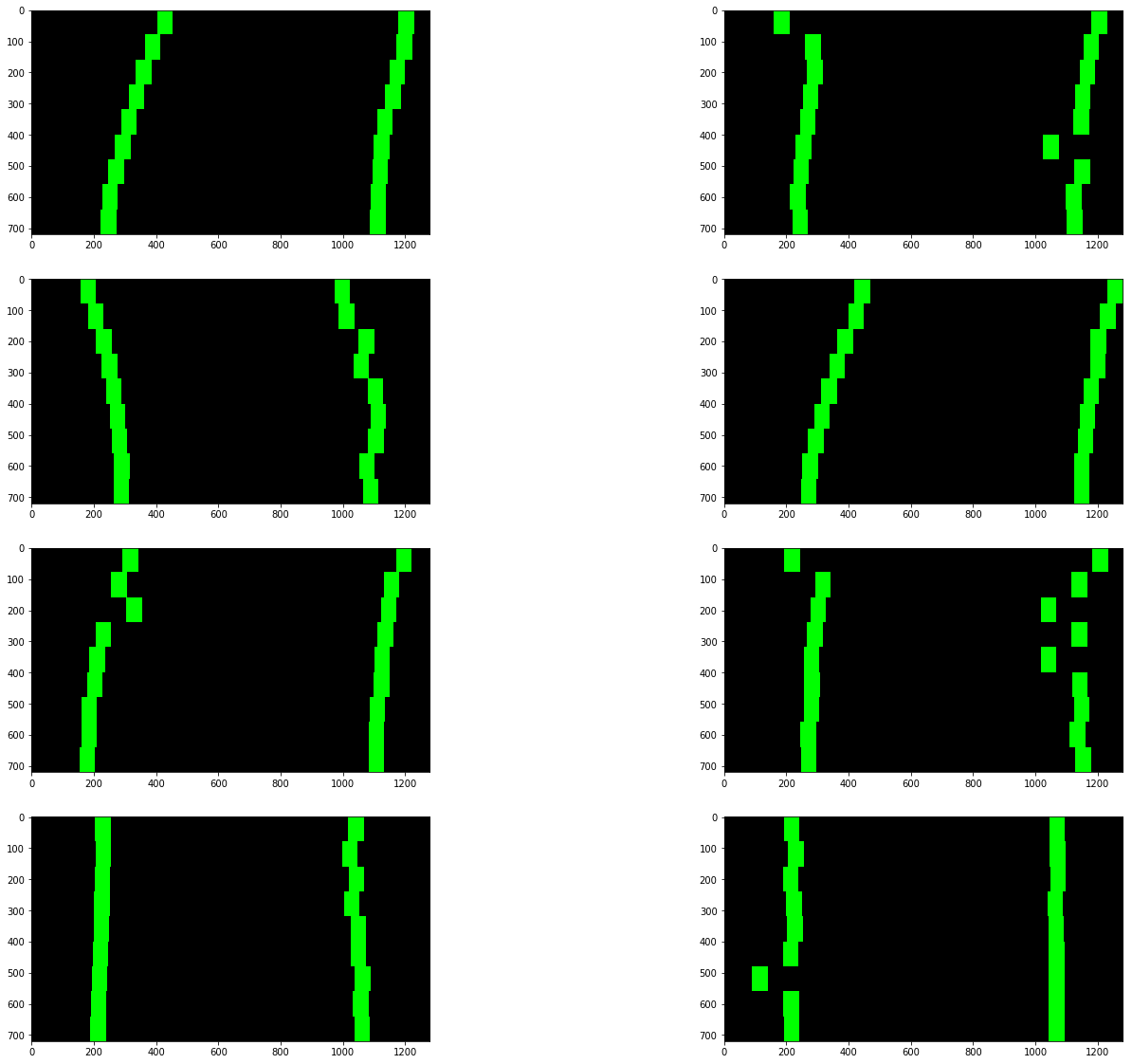The goals / steps of this project are the following:
- Compute the camera calibration matrix and distortion coefficients given a set of chessboard images.
- Apply a distortion correction to raw images.
- Use color transforms, gradients, etc., to create a thresholded binary image.
- Apply a perspective transform to rectify binary image ("birds-eye view").
- Detect lane pixels and fit to find the lane boundary.
- Determine the curvature of the lane and vehicle position with respect to center.
- Warp the detected lane boundaries back onto the original image.
- Output visual display of the lane boundaries and numerical estimation of lane curvature and vehicle position.
1. Compute the camera calibration matrix and distortion coefficients given a set of chessboard images.
The code for this step is contained in the src/CameraCalibration.py.
I start by preparing "object points", which will be the (x, y, z) coordinates of the chessboard corners in the world. Here I am assuming the chessboard is fixed on the (x, y) plane at z=0, such that the object points are the same for each calibration image. Thus, objp is just a replicated array of coordinates, and objpoints will be appended with a copy of it every time I successfully detect all chessboard corners in a test image. imgpoints will be appended with the (x, y) pixel position of each of the corners in the image plane with each successful chessboard detection.
I then used the output objpoints and imgpoints to compute the camera calibration and distortion coefficients using the cv2.calibrateCamera() function. I applied this distortion correction to the test image using the cv2.undistort() function and obtained this result:
To demonstrate this step, I used cv2.undistort function to apply the distortion correction to one of the test images like this one:

2. Binary Image: Convert the image to HLS space, threshold L (intensity) and S (color) and combine these to create a binary image
I used a combination of color and gradient thresholds to generate a binary image. The function black_binary_image (6th cell) in src/LaneFinding.ipnyb takes in the image and threshold and returns the binary image. Here's an example of my output for this step.
The code for my perspective transform includes a function called perspective_transform(), which appears in lines 1 through 8 in the file src/LaneFinding.ipnyb (example, in the pth code cell of the IPython notebook). The warper() function takes as inputs an image (img), as well as source (src_vertices) and destination (dst_vertices). I choose to hardcode the source and destination points in the following manner:
src_vertices_roi = np.float32([(575, 460), (190 ,image_shape[0]), (1125, image_shape[0]), (710, 460)])
offset = 190
dst_vertices_roi = np.float32([[offset, 0], [offset, image_shape[0]],
[image_shape[1]-offset, image_shape[0]],
[image_shape[1]-offset, 0]])This resulted in the following source and destination points:
| Source | Destination |
|---|---|
| 575, 460 | 190, 0 |
| 190, 720 | 190, 720 |
| 1125, 720 | 1090, 720 |
| 710, 460 | 1090, 0 |
I verified that my perspective transform was working as expected by drawing the src_vertices and dst_vertices points onto a test image and its warped counterpart to verify that the lines appear parallel in the warped image.


Then I used 2D convolutions with a sliding windows from left to right of the image to detected the line. Height of convolution is 1/9 of the image height (too small leads to give way to more noise, too large leads to approximation error of the curve). So the loop runs 9 times to get all the edge points in the left and right part of the image. The code for this section is in cell 49 find_window_centroids() The points are the passed to cv2.polyfit function to fit my lane lines with a 2nd order polynomial kinda like this:
I modified the Line class to calculate and store the radius as well as vehicle position. The code is in cell 52 in line_from_pixels function. There are a bunch of sanity check functions in the the Line class to check if the lines detected are parallel, similar to lines detected in previous frames and are of justifible width.
I implemented this step in 53rd cellin the function fill_pixels_road(). Here is an example of my result on a test image:
Here's a link to my video result Here's a link to video 2 result Here's a link to video 3 result
Following checks are done to make the detections of lane more robust:
- Curvature of lines in new frame is similar to previous frame.
- Lane width makes sense (is less than max width, more than min width, and similar to width in the previous frame)
- Lanes are almost parallel (Check the standard deviation of the difference of pixel between two lines)
- Comparison of the lines bottom pixels with previous frames (bottom location of the line in different frame should be of similar values)
- Smoothing: Using past 10 frames to make the lines more smooth
- It fails when we have a shadow or dividor very close to the road lines(Like in challenge_video.mp4). It can be solved by two ways. One - Only search in the vicinity of the locations in the previous frames. I tried this. It makes results better but still it is not very robust. Come up with a smarted solution to select best 2 lines from all detected lines.
- When the lines curves a lot (like in harder_challenge_video.mp4). Using less than 10 images for smoothing and than relaxing radius constaints a bit. But then results on the other 2 videos are impacted.
- Giving more weights to the recent images when calculating best_fit rather than just taking an average.
- Kalman filter can also be used for tracking rather than taking the average of the past lines.
- There us another issue when we don't get good detection contiously for few frames. This one is harder to solve and I am still thinking about a solution for that.



